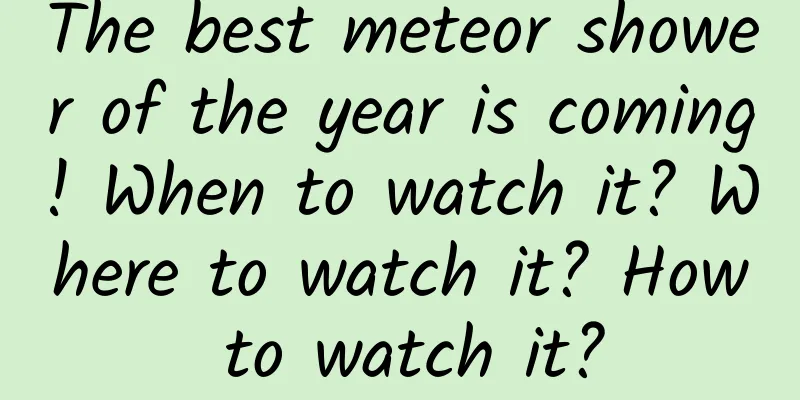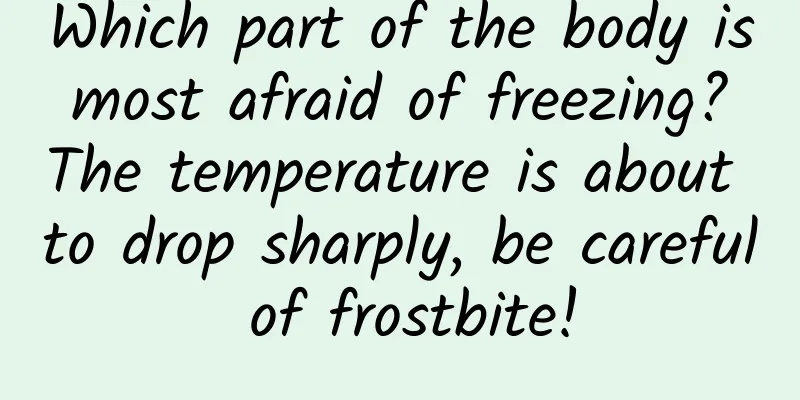The best meteor shower of the year is coming! When to watch it? Where to watch it? How to watch it?

|
Venus will be with the moon, Jupiter will be at opposition, Mercury will be at its greatest western elongation... In December, there will be many wonderful astronomical events. The Geminid meteor shower, the most stable and the highest flow of the three major meteor showers, will also arrive. Meteor shower data map (Source: Visual China) December 5th is the " encore performance " of Venus and the Moon: the thin crescent moon comes to the east of Venus, and the two have another intimate date. Wang Yumin, an expert from the Beijing Ancient Observatory, said that in recent months, there will be one or two evenings every month with a similar astronomical phenomenon, which is very worth appreciating and photographing. The next protagonist to appear is Jupiter. Jupiter will be at opposition on December 8 , and the days before and after are the best time to observe Jupiter. Jupiter rises at dusk and sets at dawn, and is visible all night long. It is the brightest object in the night sky besides the moon and Venus. Observers can also see Saturn and the moon in close proximity. The peak time of this year's Geminid meteor shower is around 9:00 a.m. on December 14. Therefore, the best time to observe is from the night of the 13th to the early morning of the 14th. Unfortunately, the moon phase is gradually getting full in the past few days, which has a great impact on observation and photography. Observers can choose to avoid moonlight and face east to observe after the moon sets in the west in the second half of the night. In the early morning of December 14, the moon will pass in front of the Pleiades, stole the show from the Geminids. "Lunar occultations" can happen many times in the same month. On December 9, the moon will occult Neptune; on December 25, the moon will occult Spica. The last " Mercury's greatest western elongation " of the year will take place on December 25. Because Mercury is too close to the sun, it is often drowned out by the sun's brilliance at dusk or dawn. It can only be seen with the naked eye when its angular distance from the sun reaches its maximum. At that time, as long as the weather is fine, at dawn about a week before and after the greatest elongation, observers can look toward the southeast sky and observe Mercury with the naked eye or with the help of binoculars. |
<<: Weird, why are the fruits and vegetables in my refrigerator "sweating"?
>>: @All COPD patients, don’t just lie down because of asthma
Recommend
Why is it difficult for the home appliance industry to have a second Haier, Midea or Gree
I don’t know if people in the home appliance indu...
The Ministry of Industry and Information Technology released 136 apps that violated user rights: Tencent Mobile Manager was among them
On March 12, the Ministry of Industry and Informa...
Toutiao Advertising Manual, let your information flow ads be on the "headlines"!
Recently, CB Insights, a well-known American vent...
What is the price for Guigang Mobile Phone Accessories Mini Program investment? Guigang mobile phone accessories applet investment price inquiry
How much does it cost to invest in Guigang Mobile...
Latest | Data rankings of 56 mainstream information flow advertising platforms!
The following is the latest traffic ranking of 56...
Can eating mushrooms relieve depression? Science debunks rumors of the week
Eating mushrooms daily may reduce depression and ...
How terrifying is the anti-human weapon known as the "fireworks of death" - the "white phosphorus bomb"?
When the white phosphorus bomb is dropped, a clou...
Raising Thoreau as a potted plant? Beware of a life sentence
If you walk into the greenhouse of Wuhan Botanica...
Why has the radio and television industry fallen to a state of decline even worse than Chinese football?
I know that the following words will certainly le...
How do mini programs make money? What are the money-making models of mini programs?
How do mini programs make money? What are the mon...
Fish, shrimp, crab, milk, vinegar, sweet potato... Why does persimmon have so many "enemies"?
"Persimmons cannot be eaten with fish, shrim...
Toyota finally can't sit still anymore
Ford Edge: Beats Highlander! Volkswagen Touron: B...
He died on the spot after eating a dinosaur. Can he be called the "Crocodile God"?
How could the crocodiles living 100 million years...
How to operate Weibo? Sharing of Weibo operation ideas
Recently, many people have asked me how to operat...









